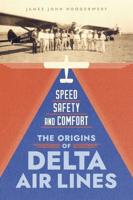Publisher's Synopsis
The experience of transport systems users, in terms of comfort, reliability, safety and above all convenience, is critical in determining demand for transport services, at least when there is a choice of alternative ways to travel. Convenience is one of the strongest attractions of the private car for passenger transport. For users of public transport, convenience is also clearly important but not always clearly defined and not often measured in designing transport systems or monitoring their operating performance. In many situations, an increase in public transport convenience reduces the unit costs of travel (euros/dollars per hour or cents per minute) and so provides benefits equivalent to an increase in travel speed. This report focuses on convenience and its importance to the user experience. It reviews operational definitions of convenience, evidence for the willingness of users to pay for convenience and the use of indicators to assess and improve the convenience of public transport, with a view to making it more effective and more competitive.









